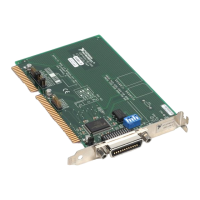HOME
TitleShort-Hidden -125
©
National Instruments Corporation
Compliance
Next
Step
12
Compliance
FCC/DOC Radio Frequency Interference Compliance
This equipment generates and uses radio frequency energy and, if not installed and used in strict accordance with the
instructions in this manual, may cause interference to radio and television reception. Classification requirements are the
same for the Federal Communications Commission (FCC) and the Canadian Department of Communications (DOC). The
FCC/DOC classification is indicated on a label on the devices. If an FCC ID is present, the equipment is Class B; otherwise,
it is Class A. Look at the product to determine the classification, then read the appropriate information below regarding
the compliance of your product:
Determining FCC Class
The FCC places electronic equipment into two classes based on the unwanted electrical noise emissions created by the
product and the intended location where the product will be used. The noise emissions are very weak radio signals, but
can nonetheless interfere with radio or television broadcasts if the product FCC Class is not considered during use.
However, the marking methods and terminology specified in the FCC rules are rather vague.
By looking at the National Instruments GPIB product you purchased, you can determine the FCC Class and therefore
which of the two basic FCC Warnings apply. In most cases, the product is FCC Class A and displays a simple warning
statement regarding interference. FCC Class B products are distinguished by displaying either a FCC ID code starting
with the letters EXN, or the newer FCC compliance mark that appears generally as follows:
Due to the risk of interference to communications, FCC Class A products are not to be used in proximity (approximately
33 yards or 30 meters) to residential areas. FCC Class B products have lower noise emissions and therefore no restrictions,
except for the basic prohibition against causing harmful interference to communications.
The curious reader can consult web site
http://www.fcc.gov
for more information.

